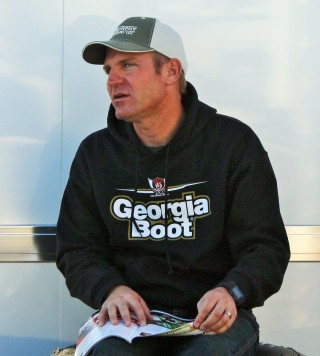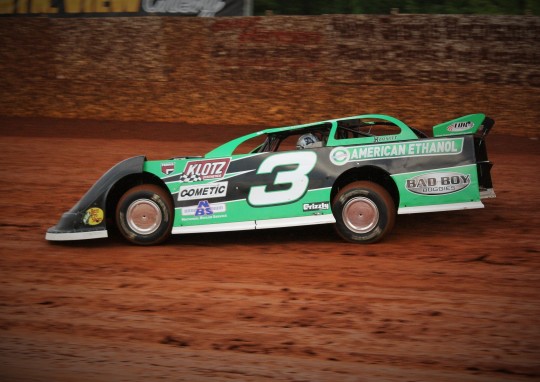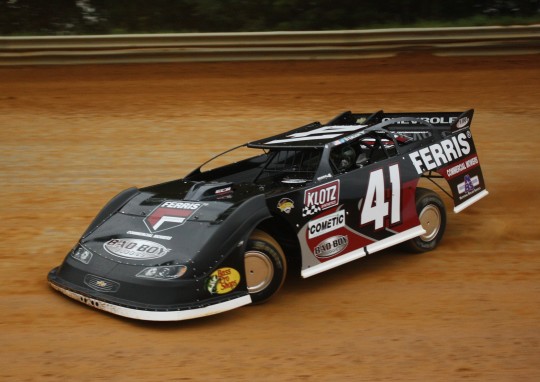This weekend marks the tragic one year anniversary of one of the darker moments in recent racing history. After a racing incident between the sprint cars driven by NASCAR star Tony Stewart and dirt racer Kevin Ward, Jr. during an event at New York’s Canandaguia Motorsports Park sent Ward’s car off the track and out of the race. As has been well documented by now, Ward ventured onto the track surface on foot to confront Stewart as he and the rest of the field motored around the clay oval under caution.
What happened next was the real tragedy of the evening. Ward was struck by Stewart’s car, which led to the death of the 20-year-old racer.
In the days and weeks following the tragedy, various NASCAR-focused media outlets questioned the participation in dirt racing by those who primarily race in the more heavily exposed form of the sport. Some even went so far as to wonder whether NASCAR racers would shun dirt tracks all together.
Now that the sport is one year removed from the Stewart/Ward tragedy, there seems to have been very little impact on the involvement in dirt racing by those whose primary income is derived from NASCAR. As a matter of fact, Stewart himself remains heavily invested in dirt.
Stewart maintains a sprint car team that fields machines for World of Outlaws Sprint Car champions Donny Schatz and Steve Kinser. He also owns the famed Eldora Speedway(among other tracks) in Rossburg, Ohio, which serves as the site of premier events for Dirt Late Models and sprint cars as well as the ‘Mud Summer Classic’ race for the NASCAR Camping World Truck Series.
Sprint Cup competitor Kasey Kahne also owns a highly successful sprint car team that participates with the World of Outlaws and other sanctioning bodies with drivers Daryn Pittman and Brad Sweet behind the wheel.
Clint Bowyer also finds himself as part of the two worlds that make up stock car racing in America. The Sprint Cup driver fields a two car Late Model effort for drivers Don O’Neal and Steve Francis. The Bowyer Dirt team has a record of success that includes major race victories as well as the 2014 Lucas Oil Late Model Dirt Series championship with O’Neal.
Austin and Ty Dillon, successful drivers in their own right and the grandsons of famed NASCAR team owner Richard Childress, cut their racing teeth on dirt track all over the country at the behest of their “pop-pop”. The brothers continue to race on dirt whenever possible. This summer, both have appeared in multiple Summer Nationals and Southern Nationals events.
In each of the past two years, the Boyd’s Speedway in Ringgold, GA has experienced large and energetic crowds on the nights in which the Dillon brothers have participated in Southern Nationals races there. Their involvement in those races as well as their taking time to sign autographs and give Late Model ride-a-longs to fans may not be the only reason for the full grandstands at the Chattanooga area facility, but it almost certainly has played a part.
Perhaps the most noteworthy involvement by NASCAR personalities in dirt racing over the past couple of seasons may be that of championship winning brothers Bobby and Terry Labonte. The Longhorn Chassis built from their shop in North Carolina has taken the sport by storm with drivers such as Jonathan Davenport and Randy Weaver piling race wins in some of the biggest events contested by Dirt Late Models.
The point of that somewhat long summation of NASCAR types who participate in dirt racing is to show, that despite what might have been thought initially following Ward’s death, that said participation remains strong. However, the relationship between the two forms of racing is not always a smooth one.
To the casual observer, it may seem as if these are both forms of racing in which cars turn left around oval tracks at high rates of speed. However, these are two very different worlds that exist in somewhat of a paradox.
As mentioned above, dirt tracks often benefit from involvement by having NASCAR racers on hand as more spectators will be drawn to events in which those drivers compete. That added exposure can potentially create interest that will bring the new fans back on occasions in which NASCAR drivers are not on the premises. Obviously, the more fans that show up on a given night at a track, the better for that speedway’s bottom line.
At the same time, however, there is somewhat of a feeling among some, especially those who have participated in or followed dirt racing for a significant amount of time, that NASCAR is not welcome on dirt. Fans and drivers alike will point out that those coming from NASCAR have big budgets from sponsors and from their own considerable incomes to back what is viewed by the regulars as a hobby. This, in turn provides the teams associated with these drivers a considerable advantage.
As someone who has attended multiple races in which representatives from NASCAR have been present, I can say there is a feeling among some, but certainly not all, in dirt racing pit areas of resentment toward the more publicized form of the sport. But as stated above, there are those in attendance who are more than happy to have NASCAR members in attendance.
As a matter of fact, one representative from an east Tennessee track has told me that their number of pit passes sold during an event in which there might be a NASCAR driver on hand increases dramatically just because fans want to see their favorites up close. So not all are opposed to their presence, but some are.
During the writing of this piece, it became known that the Ward family has filed a wrongful death suit against Stewart in a New York court. It will be interesting to see not only how this suit plays out but also how those on both sides of the sport view it as it proceeds. And it will also be interesting to see what the impact of this suit might have on further involvement of NASCAR’s stars in dirt racing.









